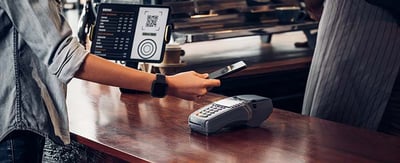
Social Media Payments and Chargebacks
By Chris Alarie on Jan 26, 2023
As a part of his whirlwind first days as the owner of Twitter, Elon Musk had the social media company file paperwork with the Treasury Department’s Financial Crimes Enforcement Network (FinCEN) to register as a payments processor. The specifics of what this will entail—and whether or not it will happen at all, considering how chaotic Musk’s tenure has been—remains to be seen. But it would follow existing trends in which social media platforms serve as payments processors for transactions carried out through the platforms.
As with other new, technologically-based payments trends, social media payments offer merchants new opportunities for reaching consumers as well as new risks, including fraud and chargebacks risks. This article will examine those risks and rewards, how they compare to those of other new forms of payments, and what merchants can do to best take advantage of social media payments.
Social Media Payments
Meta owns the three most widely used American social media apps—Facebook, Instagram, and Facebook Messenger. Meta also has its own payments processing feature across all three platforms as well as WhatsApp. It was originally introduced as Facebook Pay and transitioned to Meta Pay in September 2022 as a part of the company’s efforts to rebrand around metaverse initiatives.
Meta Pay allows users to upload payment information from a credit or debit card, PayPal, or Shop Pay. Meta Pay then acts as the payments processor for any transactions that occur within the apps. This includes payments to merchants, peer-to-peer (P2P) transactions, and charitable donations. Rather than connecting to external merchant platforms or payments processors, these transactions occur directly within the Meta apps.
Meta is not the only major, American social media that has instituted something like this. Snapchat experimented with P2P payments called Snapcash in 2018 but ultimately scrapped the project. It is likely that Twitter is hoping to institute something like Meta Pay as part of significantly wider goals that Musk has for the platform.
Everything Apps
Turning Twitter into a payments platform would be something of a return to form for Musk. One of his earliest business ventures was an online bank named X.com, which merged with Cofinity to become PayPal. Musk has also proposed bringing back that old business name, explaining that his plans for a revamped Twitter would be a step toward creating the X app, which he described as an everything app. There are examples of everything apps similar to what Musk envisaged, mostly found in Asian countries.
The most prominent such everything app is WeChat, a Chinese app that began as a messaging app similar to WhatsApp or Telegram. Since its initial launch in 2010, it began adding additional features such as social media feeds and payment options. Because it was already so widely used for the messaging and social media features, it became the dominant force in payments and shopping once those features were added. In Southeast Asia, Grab fills a similar role. Reuters describes it as being widely used for “food delivery, ride-hailing, on-demand package delivery and financial services and investing.”
Musk’s payment ambitions for Twitter, Snapchat’s aborted P2P experiment, and Meta’s payment options represent different attempts to create an American version of an everything app. While it seems unlikely that a single app will acquire the level of market dominance as WeChat, which has more than one billion monthly active users, the allure of the everything app—as well as the market pressures of declining ad revenue for traditional social media apps—will likely continue to motivate existing apps to integrate payment options into their apps.
Social Media Chargebacks and Fraud Risks
For merchants, one of the key concerns involving new forms of payment is what risks they present to merchants. Social media payments are likely as susceptible to chargebacks as any other, standard card-not-present (CNP) transactions. Using Meta Pay as an example, every Meta Pay account is tied back to a traditional payment card, either directly or indirectly through PayPal or Shopify. Similar to other online payment processors, Meta does try to encourage cardholders to resolve payment dispute with merchants directly rather than file chargebacks but they have no means of compelling cardholders to do so.
Both CNP transactions and social media are significant targets of fraud on their own. When combined, the risks of fraud are even more significant. If fraudsters often conduct phishing attacks on Facebook accounts as the first step in a fraud scheme, it is not hard to see how having payments directly integrated into accounts presents an even greater and more immediate fraud risk. Merchants have much to gain from accepting social media payments as more and more commerce moves to these sorts of integrated, frictionless, online and mobile payments. But merchants must be especially careful to institute fraud prevention tools and techniques particularly well suited to social media payments. Identity verification is especially important as social media platforms have long been a site of identity theft, impersonation, and synthetic identity fraud.
Conclusion
Whether or not Elon Musk—or any of his competitors who have more experience in the social media field—succeed in creating an American version of the everything app, integrated social media payments are likely to be a growing part of online commerce. Well-prepared merchants will certainly reap benefits from these new forms of payments processing. But they must also be wary of the risks. In addition to the fraud risks mentioned above, social media companies tend to be particularly volatile businesses. And the social media industry is very competitive, often incentivizing the rapid adoption of new technologies, with all the risks and rewards inherent in those sorts of endeavors. For example, Elon Musk is a well known advocate of cryptocurrency and it is possible that any Twitter payment processing platform could involve that especially unregulated, unpredictable form of payment. As with most new forms of payments technology, merchants are advised to be willing to adapt while also strengthening their hopefully already robust risk management and fraud prevention protocols.


